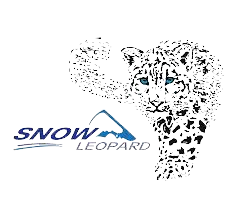Global Snow Leopard and Ecosystem Protection Program
Learn about the programPAWS
Population Assessment of the World’s Snow Leopards
The GSLEP program and its partners are engaged in an initiative to assess the global population of the threatened snow leopard. Click below to learn more about this project and participate.
Practical Tools and Manuals
Databases
Publications
LATEST NEWS
Designing infrastructure with snow leopards in mind
Asian Nations Unite to Protect Snow Leopards, Combat Climate Crisis, in World’s High Mountains
AGENDA Ninth Steering Committee Meeting of the Global Snow Leopard and Ecosystem Protection Program (GSLEP) 5-6 June, KYRGYZ REPUBLIC
Asia’s High Mountains at COP29: A Call for Urgent Climate Action
Kazakhstan and Kyrgyzstan sign a Memorandum of Cooperation for the Conservation of the Snow Leopard
Pakistan Wildlife Protection Awards and Appointment of Sardar Jamal Leghari as GSLEP Emissary
Interview with National Focal Point from Mongolia
Global Leaders call for snow leopard to be identified as the mascot of climate adaptation and mountain ecology at the GSLEP Steering Committee Meeting in Samarkand
GSLEP honoured students on the occasion of Biodiversity Day
Successful completion of the international project “Vanishing Treasures”
PAST EVENTS
Asian Nations Unite to Protect Snow Leopards, Combat Climate Crisis, in World’s High Mountains
Global Leaders Unite at Bishkek+25 to Champion Mountain Ecosystems and Biodiversity
Ethical Approaches to Community Engagement for Biodiversity Conservation: International Trainers’ Workshop Conducted at Lake Issyk-Kul, Kyrgyzstan
Appointment of Sardar Jamal Leghari as GSLEP Emissary
Successful completion of the international project “Vanishing Treasures”
Snow leopard – symbol of the Third Pole
The VIII Steering Committee Meeting of the Global Snow Leopard and Ecosystem Protection Detailed Agenda
Asia’s leaders unite for Climate Adaptation in the Third Pole for Snow Leopards (CATS) & People
The 2022 Bishkek Resolution of the Global Snow Leopard and Ecosystem
Asia’s leaders launch new programs for snow leopard conservation
SNOW LEOPARD RANGE COUNTRIES
Afghanistan
Afghanistan encompasses the far western range extent of the snow leopard’s distribution. Included within Afghanistan’s range is the Wakhan Corridor, the narrow panhandle of land in Badakhshan province (in the far northeast of the…
Tajikistan
Tajikistan contains around 250-280 snow leopards primarily within the Pamir Mountain range. Tajikistan is located in the center…
Country updates 2021
Uzbekistan
In Uzbekistan the edge of the snow leopard’s range is represented by boundary areas of two independent, unconnected groups – Tien-Shan and Pamir-Alai. Both populations occupy territories, which are developed as the result of extensive…
Kazakhstan
The snow leopard is an official symbol of Kazakhstan, which was a suggestion of President Nursultan Nazarbayev. Thus,…
Kyrgyzstan
There are about two percent of the world’s species of flora and more than three percent of the species…
PARTNERS
Snow Leopard Trust
The Snow Leopard Trust has been an active partner of the GSLEP program since its inception. SLT supports the secretariat through secondment of staff for program coordination, hiring of senior advisors, hosting the website,…
Pallas’s cat International Conservation Alliance
Marwell Wildlife
Marwell Wildlife and Beijing Forestry University (BFU)’s Wildlife Institute, led by Dr Shi Kun, have formed a collaborative alliance to further develop their programme of work for the snow leopard started by Dr. Philip…
Wildlife Conservation Society
The Wildlife Conservation Society has been a GLSEP program partner since its inception. As the first international conservation organization to perform focused snow leopard field research (dating back to George Schaller’s fieldwork the 1970s),…
Flora and Fauna International
Fauna & Flora International has been an active partner of the GSLEP program since its inception. FFI supports the program through organization and facilitation of country and regional level snow leopard conservation workshops, provision…
Snow Leopard Network
The Snow Leopard Network is a worldwide organization dedicated to facilitating the exchange of information between individuals around the world for the purpose of snow leopard conservation. Our membership includes leading snow leopard experts…
Snow Leopard Trust
The Snow Leopard Trust has been an active partner of the GSLEP program since its inception. SLT supports the secretariat through secondment of staff for program coordination, hiring of senior advisors, hosting the website,…
Snow Leopard Conservancy
Snow Leopard Conservancy has been a GSLEP program partner since its inception. SLC’s senior staff provide technical expertise based on nearly four decades of snow leopard research and conservation, particularly in participatory, community…
University of Central Asia (UCA)
The University of Central Asia (UCA) was founded in 2000 based on an international treaty signed by the Presidents of Kazakhstan, the Kyrgyz Republic and Tajikistan and His Highness the Aga Khan. UCA’s mission…
University of Central Asia (UCA)
The University of Central Asia (UCA) was founded in 2000 based on an international treaty signed by the Presidents of Kazakhstan, the Kyrgyz Republic and Tajikistan and His Highness the Aga Khan. UCA’s mission…
United Nations Development Programme
The United Nations Development Programme (UNDP) has been an active partner of the GSLEP program since its inception…
Global Environment Facility
The Global Environment Facility (GEF) has been an active partner of the GLSEP program since its inception. GEF has provided financial and technical support through series of regional and national projects on snow leopard…


